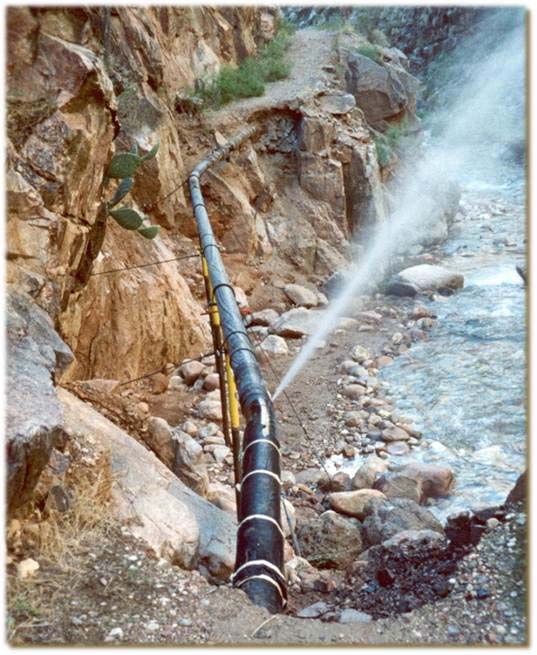 VIEW LARGER Recent photos of breaks and repairs in the Transcanyon Pipeline within Grand Canyon National Park.
VIEW LARGER Recent photos of breaks and repairs in the Transcanyon Pipeline within Grand Canyon National Park. Pipeline repairs at Grand Canyon National Park are holding and officials plan to lift the suspension of overnight lodging on the South Rim on Thursday, a week after hotels had to begin turning away visitors during one of the park’s busiest times of the year.
Four significant breaks in the 12.5 mile-long (20 kilometer-long) Transcanyon Waterline had caused the famous tourist destination to shut down overnight hotel stays beginning on Aug. 29.
Park spokesperson Joell Baird said Tuesday that the pipeline was successfully repaired late last week and no new breaks have occurred following re-pressurization and regular water flow.
She said the water storage tanks were at 13 ½ feet (4.1 meters) and should be at 15 feet (4.6 meters) by Thursday so the park can return to routine water conservation practices.
Visitors weren’t able to stay overnight at the El Tovar Hotel, Bright Angel Lodge, Phantom Ranch, Maswik Lodge, and other hotels due to last week’s water restrictions.
Officials said the park has faced challenges with its water supply since July 8.
Baird said she didn’t know the cost of the pipeline repair or how much the park may have lost in overnight reservations during the Labor Day holiday weekend.
The Transcanyon Waterline was built in the 1960s and supplies potable water for facilities on the South Rim and the inner canyon.
Park officials said the pipeline has exceeded its expected lifespan and there have been more than 85 major breaks since 2010 that disrupted water delivery.
The pipeline failure came amid a $208 million rehabilitation project of the waterline by the National Park Service.
Upgrades to the associated water delivery system are expected to be completed in 2027.
The park wants to meet water supply needs for 6 million annual visitors and its 2,500 year-round residents.

By submitting your comments, you hereby give AZPM the right to post your comments and potentially use them in any other form of media operated by this institution.